
Magento Performance Optimization-10 Tips to a Faster Website
Magento is one of the most prominent open-source e-commerce platforms, which caters online merchants with multiple tools to manage their web-store effortlessly. There is no need for any sort of technical knowledge for a store admin to maintain their website because Magento is comprised very convenient admin page. It’s a platform that is desired by the leading brands globally.
These days websites are having plenty of features that performance is always a matter of fear. Loading speed has a direct and noticeable impact on the website’s conversion rate. A slow website can increase abandonment ratio as customers left a website without browsing more web pages. Over 40% of visitors will abandon a website when it takes too long to load. So the optimization of Magento based website is very essential if you want to improve the performance of your online business.
Optimization of Magento performance will enhance your customer’s e-commerce experience. It will aid you to engage tones of consumers and let you grab the maximum revenue. When you are having a CMS platform such as Magento, you can easily convert your visitors into regular customers. An e-commerce website with accurate performance optimization can assure you more return. Here are few tips for the performance optimization of Magento to turn your inquiry into a conversion always.
1. UPDATED/LATEST VERSION
Magento keeps releasing new updates on a regular basis and with each update, it is performing more better. Upgrading to a whole new version is a quite challenging procedure that assures all of your extensions are compatible with the latest version. Since its release in November 2015, Magento 2 has been endorsed by plenty of merchants whether its startups or established corporations.
Magento 2.0 is not the latest version. The most recent and optimized version is 2.3.2 and it’s even speedier than 2.0. Magento 2.3.2 has a batter image slider that enables images to load very quickly. It also offers major improvements to front-store page response time. Magento also notifies you about the significant updates within your notifications/messages inbox.
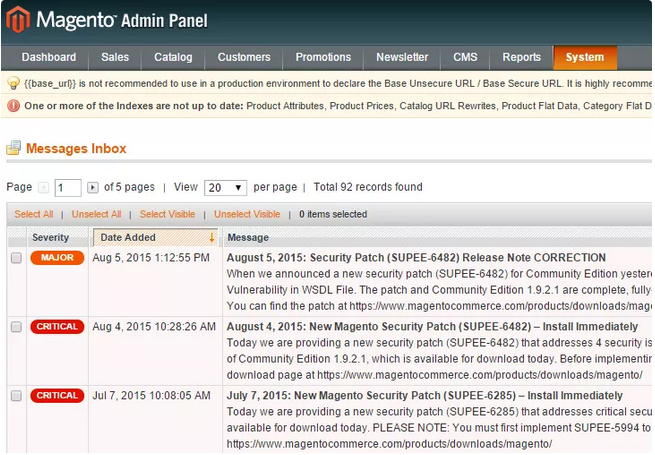
2. CONTENT DELIVERY NETWORK (CDN)
A CDN is a global network of servers. It is used to reduce the load time significantly and provide a greater user experience. This system of distributed servers provides web content to users from different locations. If you want to target global traffic, CDN is the best thing you need to implement for your web site. Copies of static assets such as images, CSS style sheets, and JS files will be kept in multiple data-centers and distribute worldwide.
- The more close CDN server to a user = Faster content will be supplied to the shopper.
- It guarantees that your product images, CSS & JS load instantly to the users.
- It also unloads several amounts of server’s pressure and causes the least number of procedures needed per consumer, decreased bandwidth expenses, and better response times.
3. PREFER SPECIALIZED & FAST WEB HOSTING PROVIDERS
Choose a server that can manage a load of traffic as well as simultaneous users and geographically situated close to your targeted audience. If you are obtaining the 100% usage of server CPU, it means you need to update your server. Add memory as well as CPU power.
Hosting configuration is quite significant for the performance of Magento based website. If you decide on a poor web hosting provider, it will keep you worrying about uptime. You must aware of how to opt for the best Magento hosting provider that can aid you to enhance Magento performance.
- Shared server hosting is best implemented for the beginners when your website is situated on a server that hosts other websites as well.
- Virtual Private Server (VPS) Hosting that is equivalent to shared hosting as all sites are hosted on one physical server.
- Dedicated Server Hosting is when you have your own server within your enterprise and you are having full control over everything. It is quite expensive.
- Cloud Server Hosting is similar to VPS where websites are hosted on a network of computers and can be accessed remotely. You just need to only subscribe to a different plan and immediately get more resources and more speed.
4. INTEGRATE AND MINIFY CSS AND JS FILES
In your admin panel, you can minify the CSS and JS files for speed optimization. It will decrease the load time through less request as well as little bit smaller transfers. All the white spaces, newlines, comments, block delimiters and tabs in the file will be removed by minifying them. Ultimately, the files will have a limited number of characters and thus a shorter size, so boost the downloading time. For JS minification you need to follow these steps:
- Set Magento on production mode
- Be at Stores > Configuration > Advanced > Developer
- Fix Minify Javascript Files option to Yes
- Save Config
- Flush Cache at System > Cache Management page
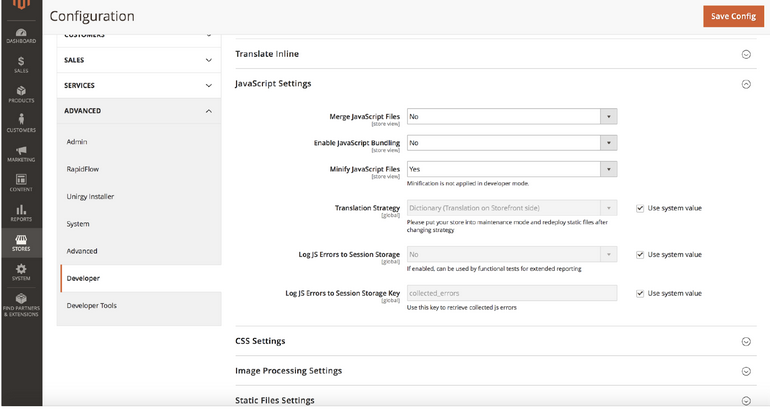
For CSS minification you need to follow these steps:
- Set Magento on production mode
- Be at Stores > Configuration > Advanced > Developer > CSS Settings
- Fix Minify CSS Files option to Yes
- Save Config
- Flush Cache at System > Cache Management page
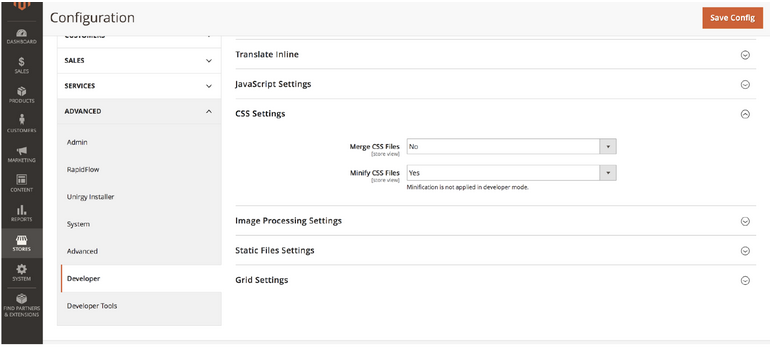
5. IMAGE OPTIMIZATION
Images are one of the key factors to slow down website loading time and it can be an issue with some smartphones, limited bandwidth, etc. Usually, an e-commerce store if almost full of high-quality images for a user’s engagement. So check your images are optimized and compressed properly before uploading on the store. Also, assure that images are not resized by CSS but have the resized source-file to the particular size you require.
You can apply JPEG format for different product images, and PNG/SVG for layouts and the logo. There are several tools such as compressor.io, kraken.io, or “Save for Web” option in Photoshop that can aid you to reduce the image size.
Users can go with these extensions if they are having <2 Magento versions:
- Compressor Extension
- TinyPNG Extension
6. CACHING
There are multiple forms of caching that can be applied and you can combine APC + Varnish + NGINX + Memcache for the better outcome. Magento suggests to turn on all the caches from System > Tools > Cache Management page. It also recommends making use of Varnish and Redis together as they are performing the equivalent task. They cache what your users observe on the website and what the developers view in the back-end.
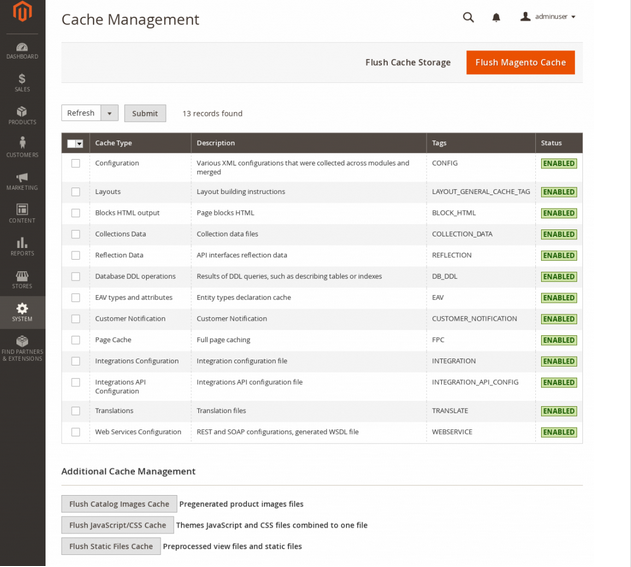
Varnish full page caching
Varnish Cache is an open-source web app accelerator that enables you to decrease the server response time and consumption of bandwidth by storing different page elements, files, etc. in its memory.
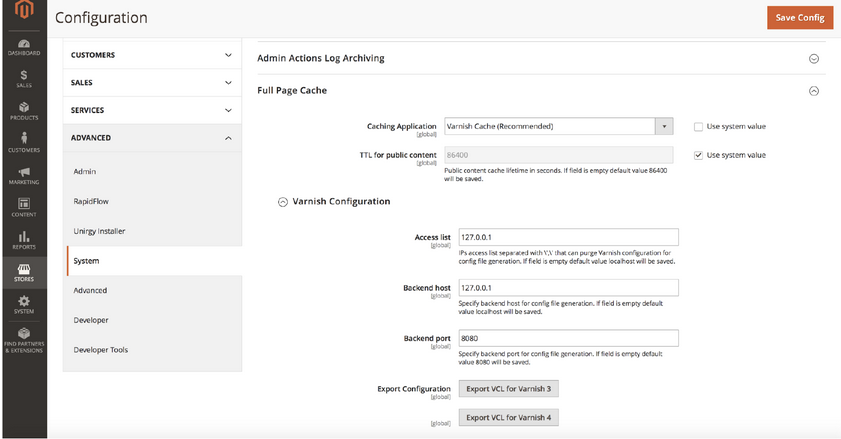
Redis session storage caching
It is one more open-source solution utilized for caching different sessions. It supports multiple types of data structures and cache full pages as well as user sessions.
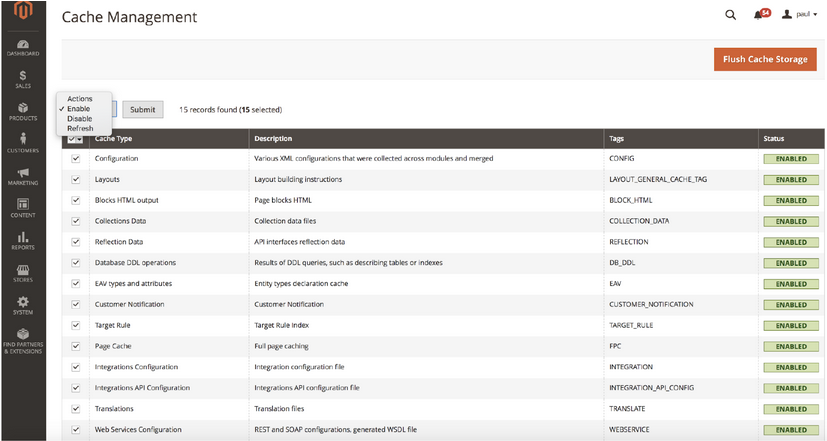
7. AVOID EXTRA EXTENSIONS/MODULES
More extension = More Http requests, CSS and JS files. Remove various Magento modules you are not using. Some modules can produce extra bloat and will result in higher load time. So it is best to keep your Magento with few possible extensions.
Be at Stores > Configuration > Advanced > Advanced.
On the modules, choose “Disable” from the drop-down box and click on “Save Config.”
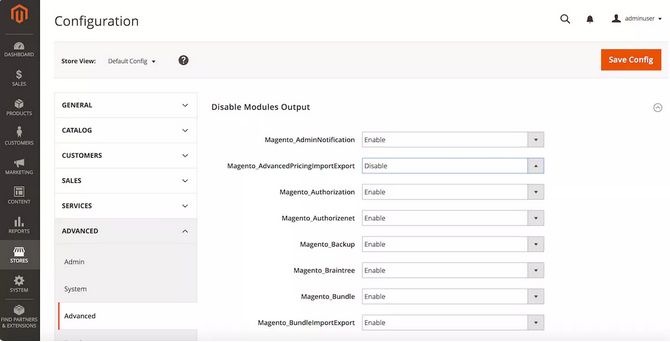
8. CONFIGURATION OF MySQL
Magento database optimization is a significant factor when it comes to the performance of your online store. Each time when a page gets loaded, a series of database queries will be generated. The processing time of long queries takes the time that ultimately slows down disk access and results in poor performance. These queries are controlled individually, with data fetched from the disk, processed, and returned to the user.
If you have added designs, plug-ins, menus, features, etc. later on might not match up with your speed goals. So the database audit and code optimization is essential. MySQL contains a configuration command “query_cache_size” that informs the server to keep query result in the memory, rather fetching it from the disk.
You need to change the settings for your my.cnf file.
query_cache_type = 1
query_cache_size = 32M
query_cache_limit = 2M
9. USE FLAT CATALOG
Magento is utilizing server resources to access categories and product details from the native database. It will result in slow speed because of the lack of resources. To solve this issue, you need to enable “Flat Catalog”. It will decrease the overall load of your database by generating a new table with every necessary record of available catalog and products. Flat tables are generated by integrating all the attributes of an entity into a table. While requesting the data, we need to query a table, to boost the performance.
Log-in to the Admin Panel:
- Be at Stores > Configuration > Catalog > Catalog > Storefront
- Click Yes for Use Flat Catalog Category
- Click Yes for Use Flat Catalog Product
- Save Config
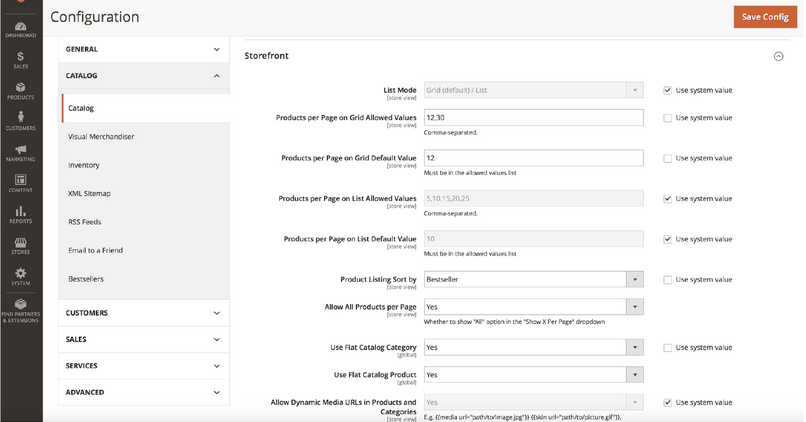
10. INDEX MANAGEMENT
There are two modes available for the Magento Indexers: ‘Update on Save’ or ‘Update on Schedule’.
When it is set to ‘Update on Save’, a particular index will start running every time you save a product/attribute/category. It results in the slow speed of a server because indexers keep consuming the resources. So the best mode is ‘Update on Schedule’. It will be executed at a particular time that you set. Choose a time when there is low traffic on the website.
In the Admin Panel go to the System > Index Management. You need to select all the indexers and then select ‘Update on Schedule’ from the Actions drop-down menu.
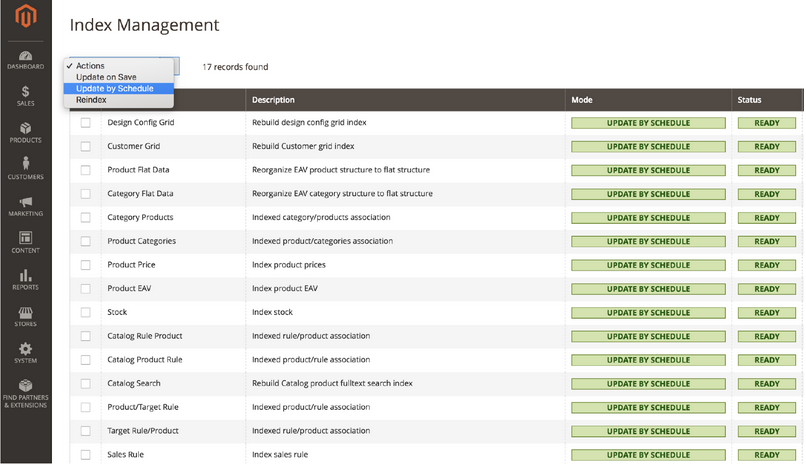
SUMMING UP
The mentioned tips will aid you to boost the performance of your Magento store by delivering enhanced user experience and increase the ration of customer satisfaction. You can easily improve your online business in terms of revenues and market traction by combining these steps together.
